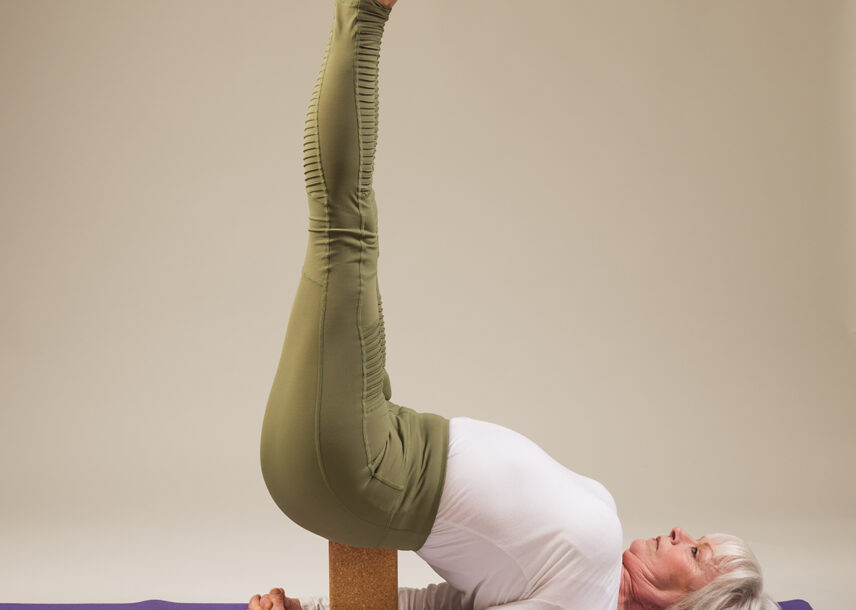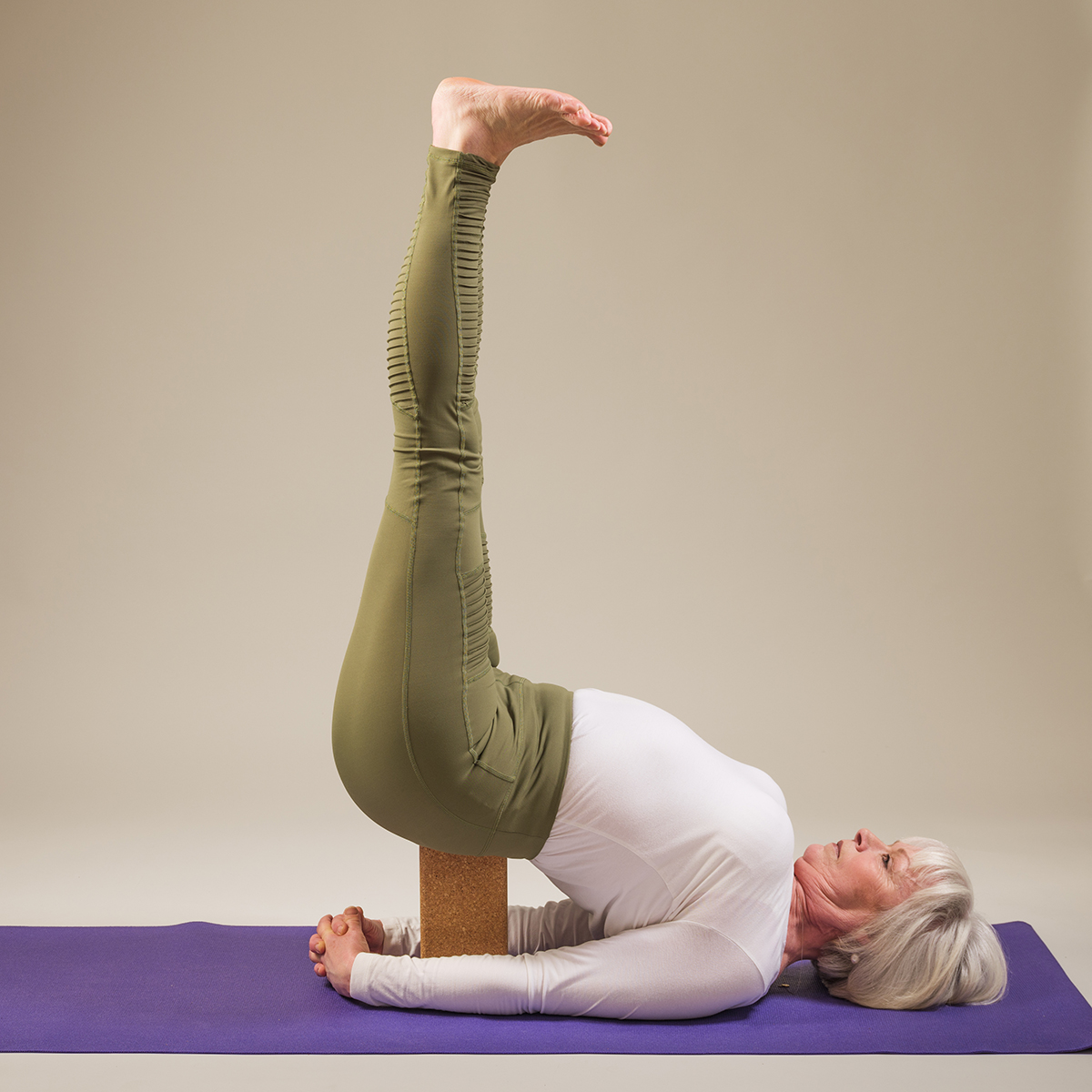
Yoga bricks are a hugely versatile yoga prop loved by many. Made from foam, wood or cork, they provide a firm surface over a combination of heights. Like yoga blocks, bricks can be used singly or together to give you many options: a single brick will give you support for your hand in standing poses or a lift for sitting poses.
Two bricks will provide a lift for a bigger surface area or increased height when you need it. If you have access to more bricks, there are several interesting ways they can help with going deeper into Sirsasana or Uttanasana. Ideally, you need two bricks in your kit and unlike the blocks, they should be very firm, never soft, spongy or flexible: bricks mirror the quality of our bones, so they should be strong and stable. Our Yoga Blocks and Bricks collection has an exceptional variety of yoga bricks to choose from, so you can upgrade your existing kit with ease.
The best way to think about using the brick is that it acts like an extension for your bones. For instance, try sitting on a brick instead of a block in Sukhasana (Easy Cross Legs). You’ll become much more aware of your buttock bones and therefore the lift of your whole skeleton. Another classic use of the single brick is to support the hand in Ardha Chandrasana (Half Moon Pose). In each case, the brick is supporting and extending the skeleton.
The actions provided by the bricks are:
Lift:
To provide height for the pelvis in Setu Banhda (Bridge Pose) see image above, or for the buttock bones in sitting postures and for the front foot in some standing poses to help feel the action in the hip socket.
Resistance:
Squeezing a yoga brick between the inner edges of the feet, the knees or thighs provides a level of resistance which gives access to the inner leg structures, from which we can learn a great deal about the way they work. The brick is very useful to keep space between the hands in poses like Pincya Mayurasana (Peacock Pose) or providing a firm surface against which to press the back of the head in Sirsasana (Headstand).

Extension:
The bricks act like an extension to the long bones – you can use them beyond your feet to go further into forward bends, and they are most often used to provide extension for the trunk in standing poses such as Trikonasana, Parsvottanasana, Prasarita Padottanasana and Ardha Chandrasana.
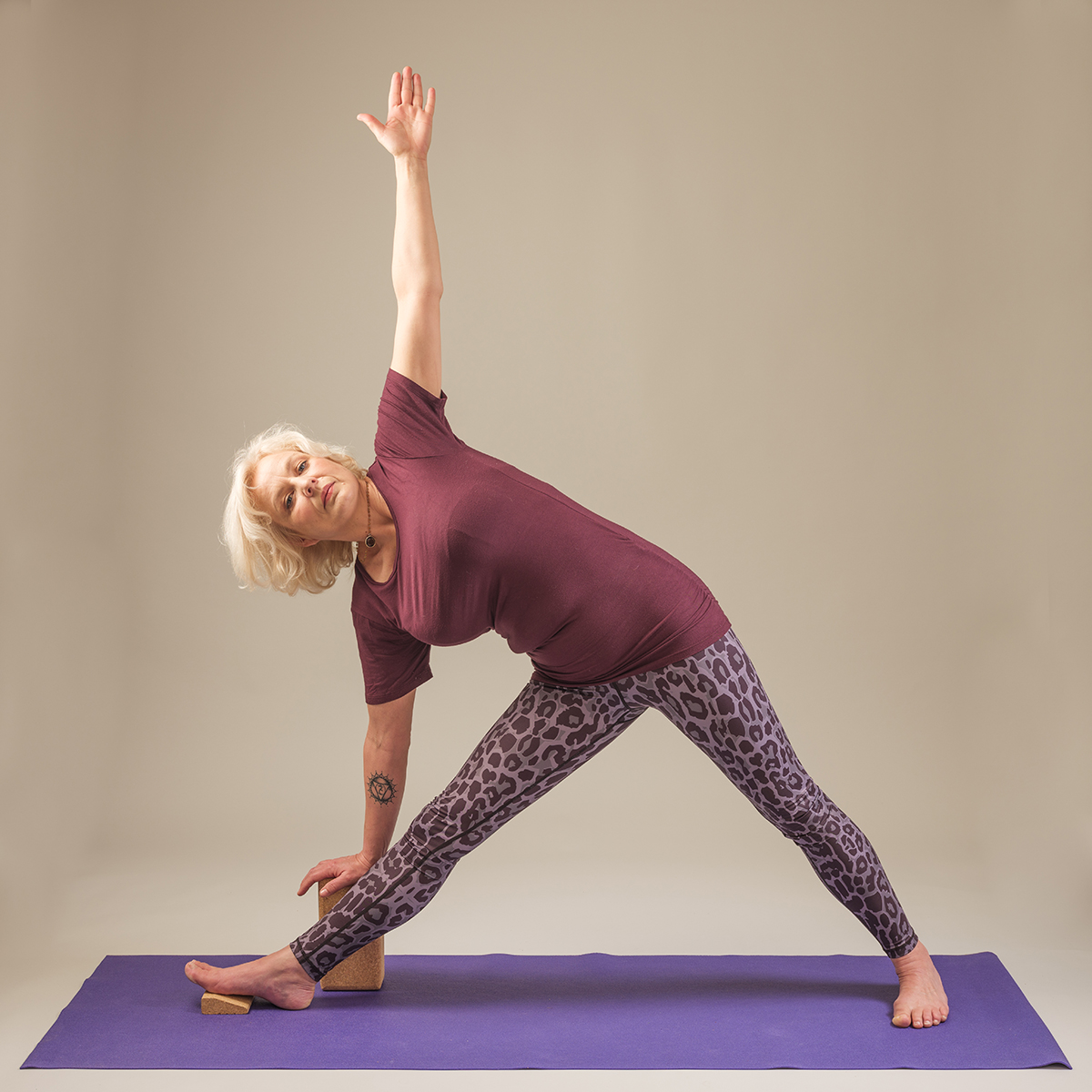
Support:
As a landing pad when you come out of Sarvangasana (Shoulderstand) or for the sacrum in Setu Bandha Sarvangasana (Bridge Pose).
Three yoga poses to try:
One brick: Paschimottanasana – Seated Forward Bend.
If you’re relatively flexible in seated forward bends, you might find this helpful to assist the extension of your trunk, and at the same time to provide a firm foundation for the feet from which to press the legs down. Place a brick just beyond your feet. Sit in Dandasana, extend your arms up and come forwards, aiming beyond your feet to catch the brick. Press your legs strongly down, pull evenly on the brick and lift your face and chest up. This is an important interim stage to bring the spine into the body and create the correct shape for your back in the final pose. Bending your elbows out to the sides, and keeping them up, extend forward and down. (When the elbows are up, the sides of your trunk extend correctly.)
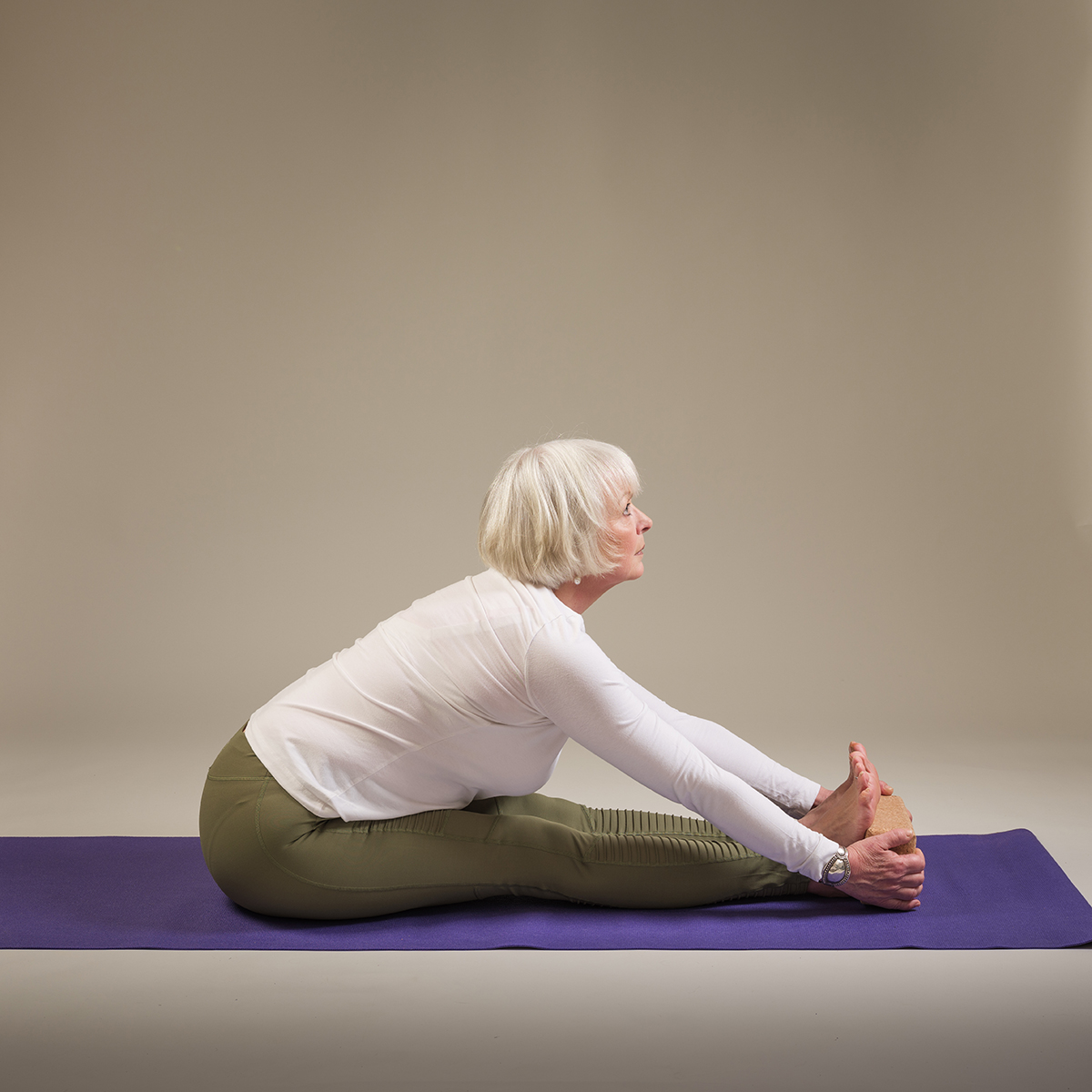
Two bricks: Parsvottanasana – Intense Side Stretch.
Learning the ‘concave back’ action in standing forward bends can be tricky; it can be a very stiff section of the spine. Using two bricks for the hands allows us to explore the extension of our legs and teaches us how to move the spine into the body, to help us release the trunk down towards the front leg. You need to press the heels of your hands into the bricks so if you don’t reach easily, stand them up on two blocks. Start at the point where there’s no difficulty and proceed slowly, step by step. Press your hands down, extend your arms well, roll your shoulders back and look forward. You’ll feel a mild ‘ache’ in the middle of your back when you’ve got it right. Take the bricks down a level and try to maintain that shape in your spine. Find out where you have to work – is it in your back leg, front leg, spine?
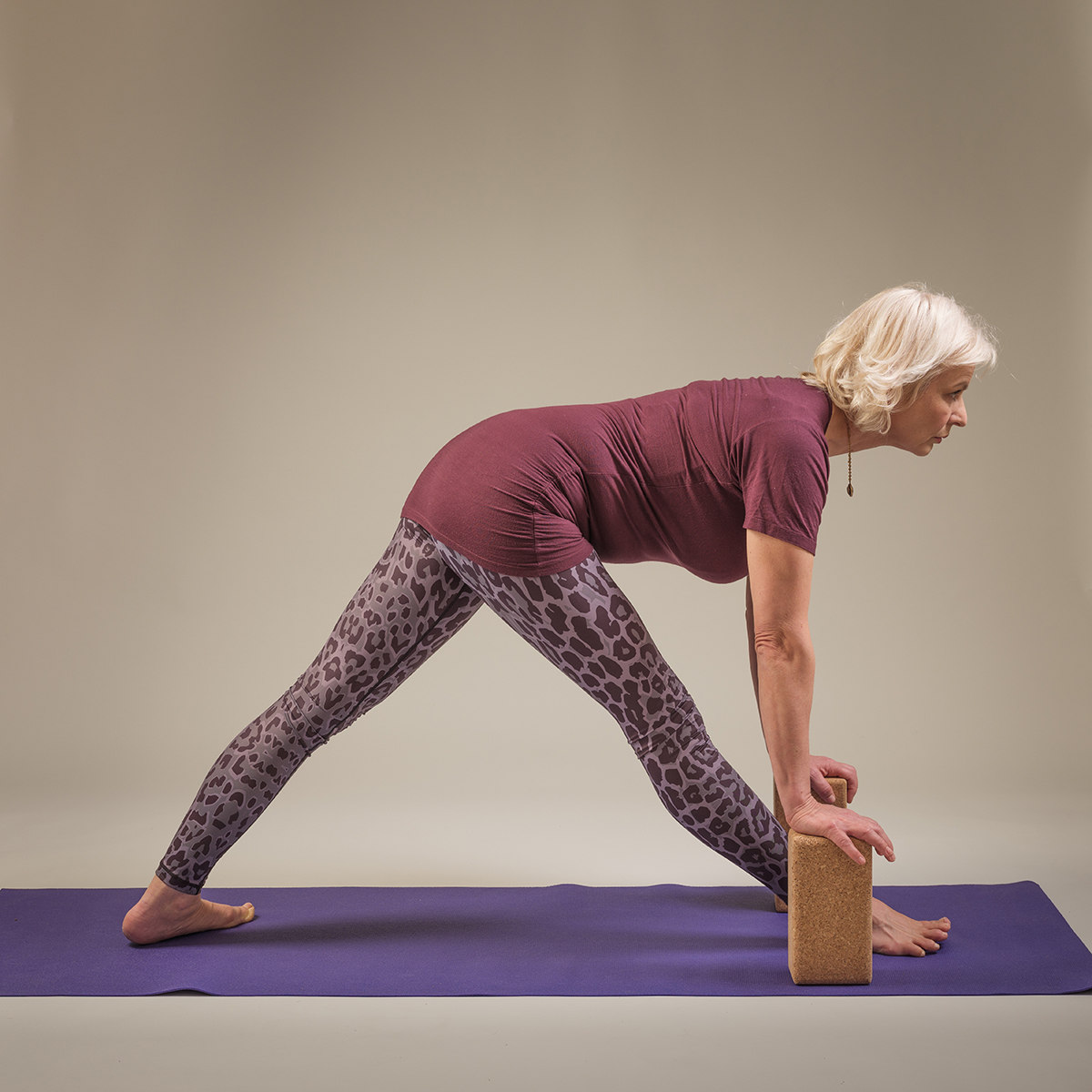
Three bricks: Sirsasana – Headstand
This support for headstand can be invaluable when you’re learning to hold this pose, especially if you find it hard to lift your shoulder blades, and they ‘fall down’ over the back of your neck. Assuming you have practised this pose with an experienced teacher before, build a kind of Stonehenge with the bricks – two upright ‘sarsens’ at a slight angle to each other, and one laid like a ‘lintel’ across the top. Place these against a wall, with the uprights in a ‘V” shape, to allow space for your clasped hands. Carefully link your fingers and place them down.
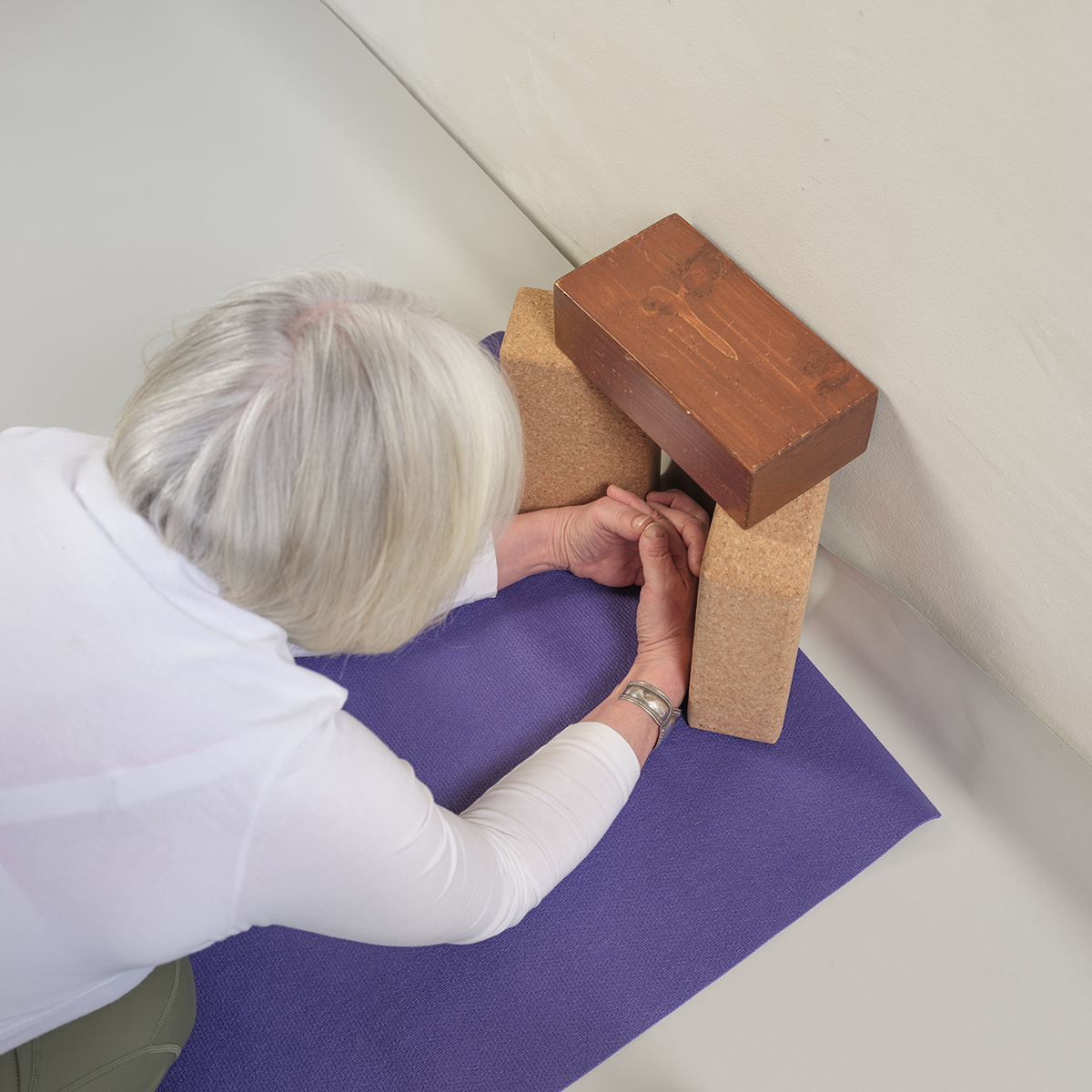
Take your head down, straighten your legs and walk in. As you do so, you’ll feel the lintel press against your shoulder blades and hold them in position as you kick up into the pose. (Ask a teacher to help you until it becomes familiar.) You’ll find you can hold the pose for longer, and the imprint of the lintel brick into your shoulder blades gives you a valuable ‘samskara’ or body memory when you try again without the bricks.
Additionally, if you require further assistance with Sirasana, the headstand pose, our collection of Feet Ups and Yoga Chairs are designed specifically to help you perfect your individual sirsasana.
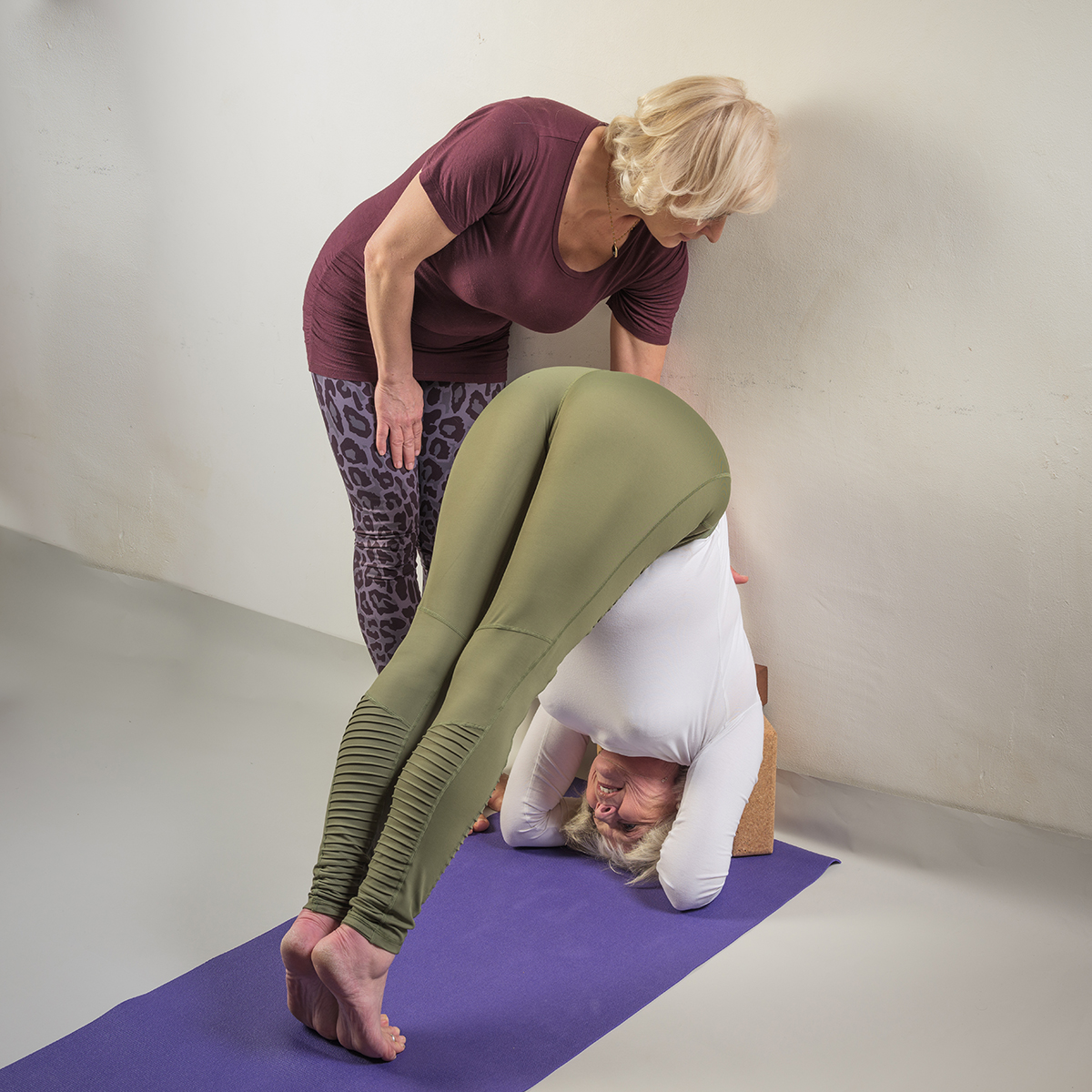
Fun Fact: Ordinary house-building bricks were first used by BKS Iyengar to help people in headstand who suffered with pain in their neck or heaviness in their head. When a soft prop like a blanket or a bolster wasn’t working, he had to find something harder, something from which the body would try to lift instead of sinking into it. He continued to refine the prop, using wood (which can be quite heavy) and then cork to give the best effect with a lighter prop.
Yoga Bricks and Blocks at Yogamatters
Whether you’re looking for additional support in yoga poses, or you’re simply interested in what a yoga brick can do for your alignment once implemented into your yoga routine, our collection of yoga bricks and blocks at Yogamatters has something for everyone. From recycled cork bricks, to foam bricks and beyond – elevate your yoga practice online at Yogamatters.


